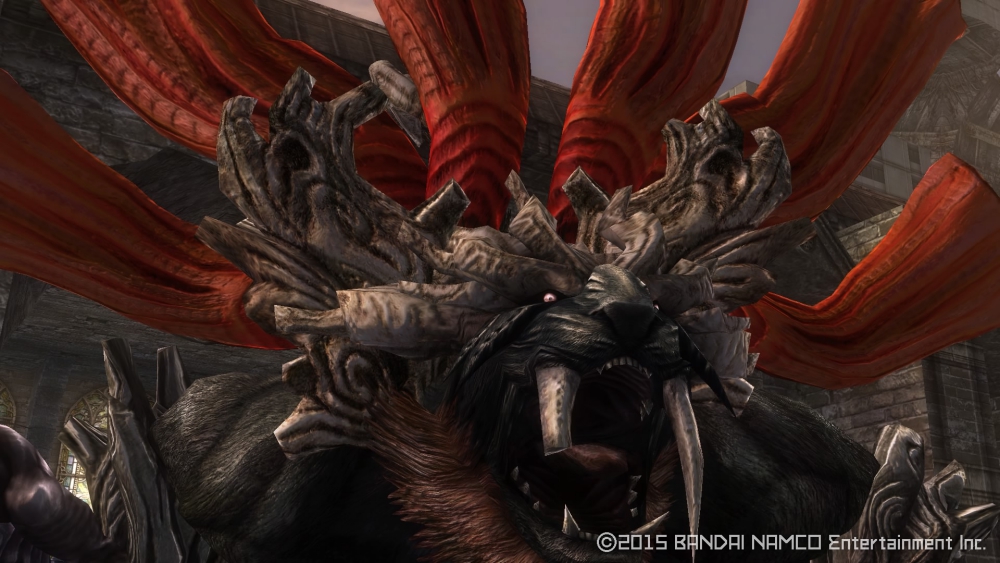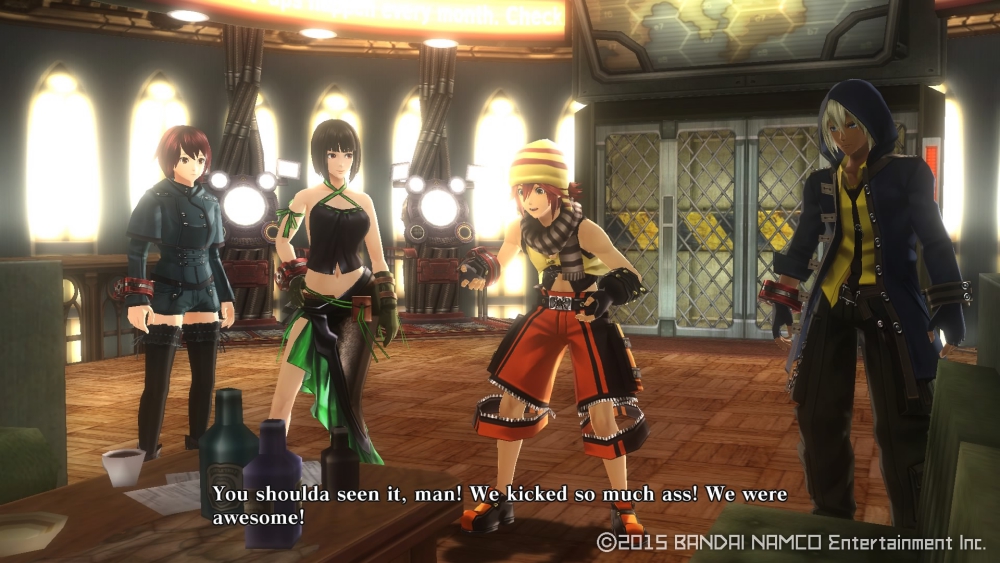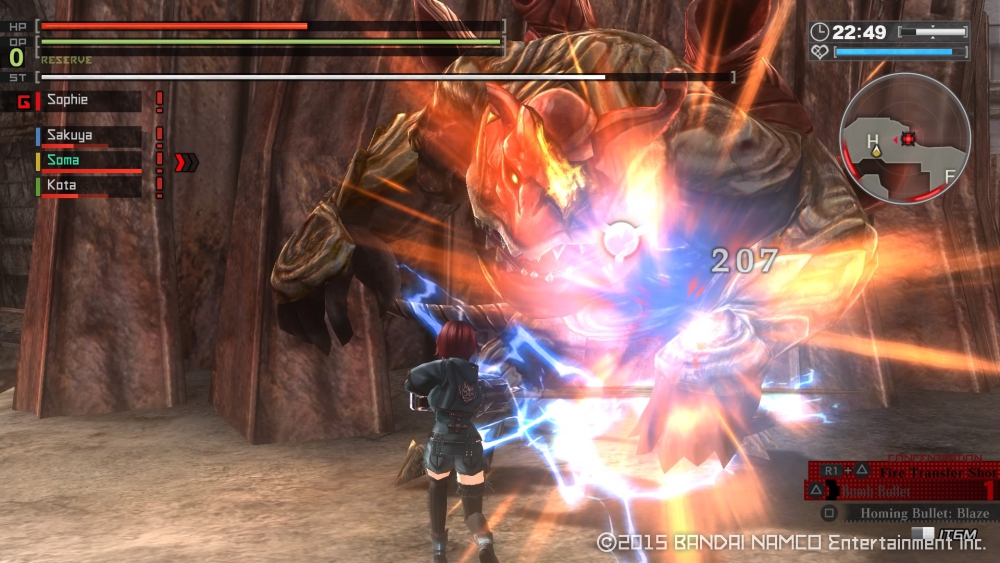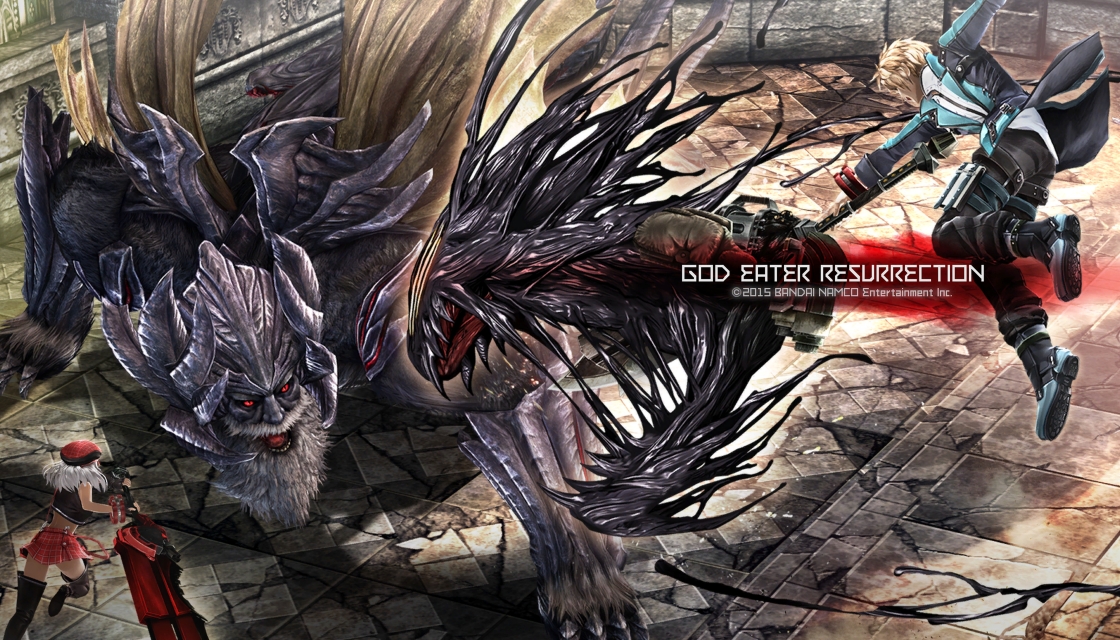God Eater: Resurrection is an action role-playing game, delivered by Director and Producer Hiroshi Yoshimura and Yosuke Tomizawa, it takes inspiration from like minded games in the genre – think Monster Hunter or Freedom Wars – but it also does some unique things that help keep it fresh. While it can occasionally bog down in sheer repetition and the rampant overuse of monsters and maps, there’s something inherently and undeniably addicting about God Eater: Resurrection.
The plot of God Eater: Resurrection revolves around the behemoth like creatures known as the Aragami and have taken over mankind. These monsters are known for being remnants of gods, animated by highly sophisticated organisms known as oracle cells. The only known way to combat this enemy is with a device developed by the humans known as God Arcs: the remains of an Aragami that will only function under a compatible bond with a human. The player will take on the role of a “new type” of human that bonds exceedingly well with these animated weapons.

The story is delivered via voice-acted cutscenes with a cast of core characters you will meet along your journey. However, the story mission structure can get pretty repetitive. I found myself taking breaks in between story missions to grind through similar levels with the same 3-4 bosses and enemies, but regardless, the fact that there’s a story worth reading at all is a step in the right direction in a sub-genre RPG that emphasizes grinding. Where God Eater does stand out is in its depth of customization systems at the player’s disposal. The Aragami all carry specific strengths and weakness. Your characters are provided with a litany of melee weapons, guns, and various kinds of items and special abilities to take into battle. Enemies also have a physical and elemental weakness that players must consider. You will also want to make sure you stock up on items before each hunt so you are well prepared if the fight takes longer than usual.

You can choose between a number of different weapons like short blades, scythes, and hammers which have access to different combos depending on what you choose. This encourages players to rotate through different weapon loadouts rather than stick to one set that you really like. I mostly played using the Buster Blade weapon, though I occasionally switched it up to try some of the other weapon types, my personal favorite being the hammer. You’ll no doubt fight with the camera from time to time (especially when you’re cornered by multiple bosses, causing the camera to freak out), but combat can still be satisfying nonetheless. Further character customization comes by way of different types of elemental bullets and guns and different categories of physical attacks. However, I did not end up utilizing the guns very much during my playthrough and just stuck to using the different weapon types.

God Eater: Resurrection can be played entirely alone – I spent a vast, vast majority of my time playing on my own – but if you want to get online and play, you can do that too. Playing online makes the game way more enjoyable. The matchmaking options are surprisingly fluid and it’s easy to invite friends to a match. Gameplay is identical whether you’re by yourself or with friends, and this is where God Eater will likely find its long-term following.

My in-game clock had me somewhere north of 40 hours in God Eater: Resurrection, but could have easily tacked on another 50 to 100 more hours to that if I went back to complete all the extra missions, craft all the different God Arcs, earned all the PSN Trophies, or spent time in the multiplayer mode.
Action RPGs like God Eater: Resurrection are often mocked for their repetitious nature, and a lot of criticism is deserved. But while it falls prey to the same pitfalls as many of its contemporaries (Is it really that hard to have a greater variety of maps and enemies?), God Eater: Resurrection does a lot well that its action bears a good deal of repeating. Whether you’re playing with alone or with friends, it’s an addictive and rewarding experience.

Pros:
- Fun combat
- Highly customizable
- Solid, Monster Hunter-like idea
Cons:
- Poor level/enemy diversity
Review copy courtesy of Bandai Namco

